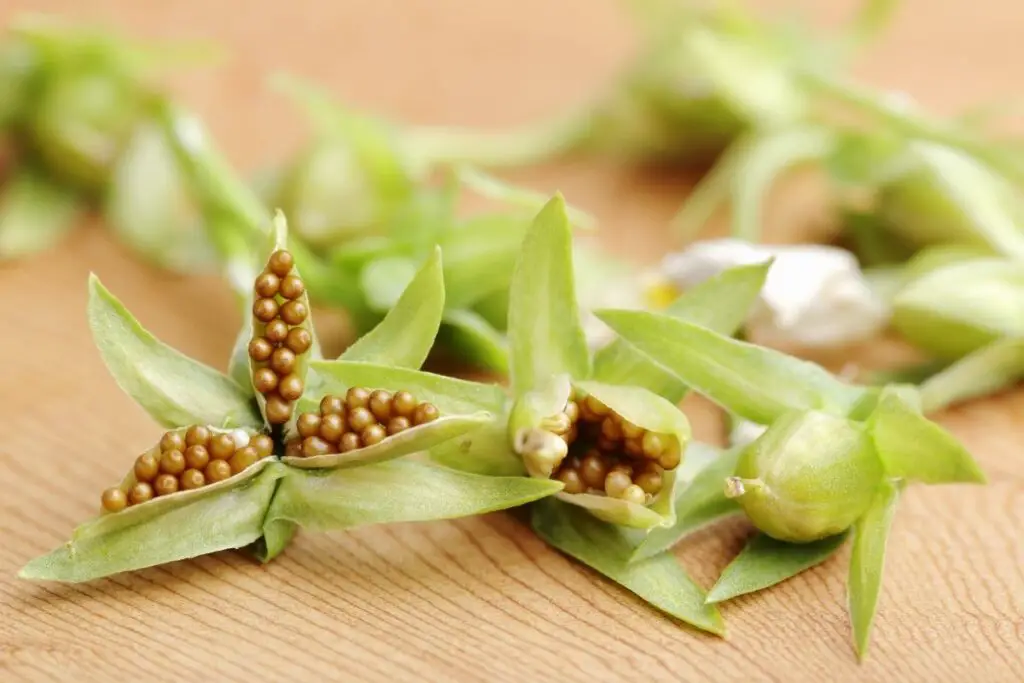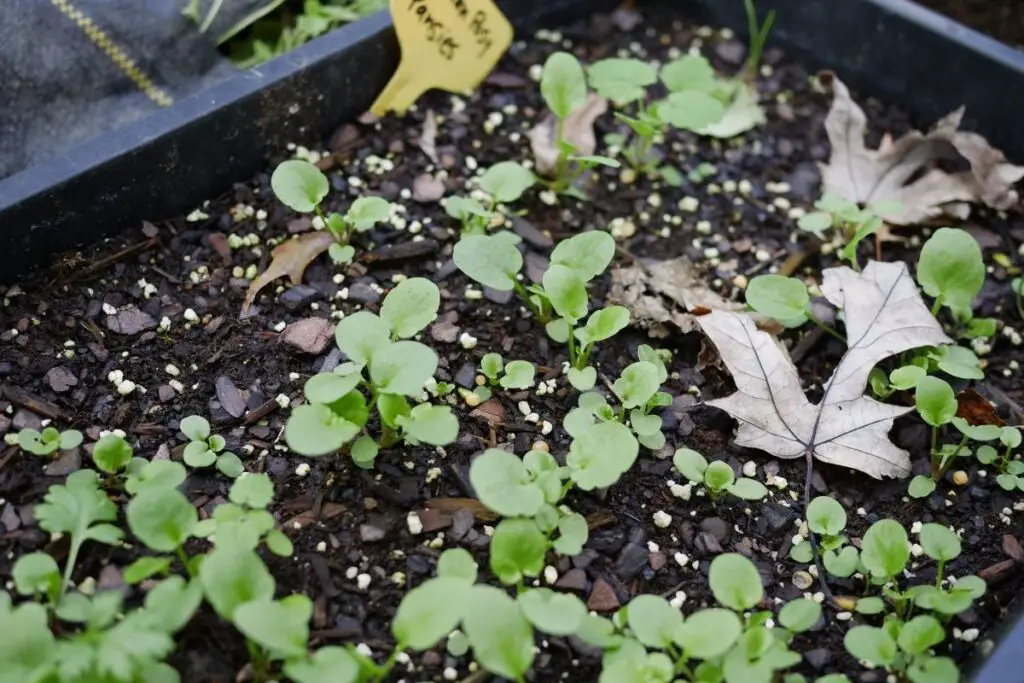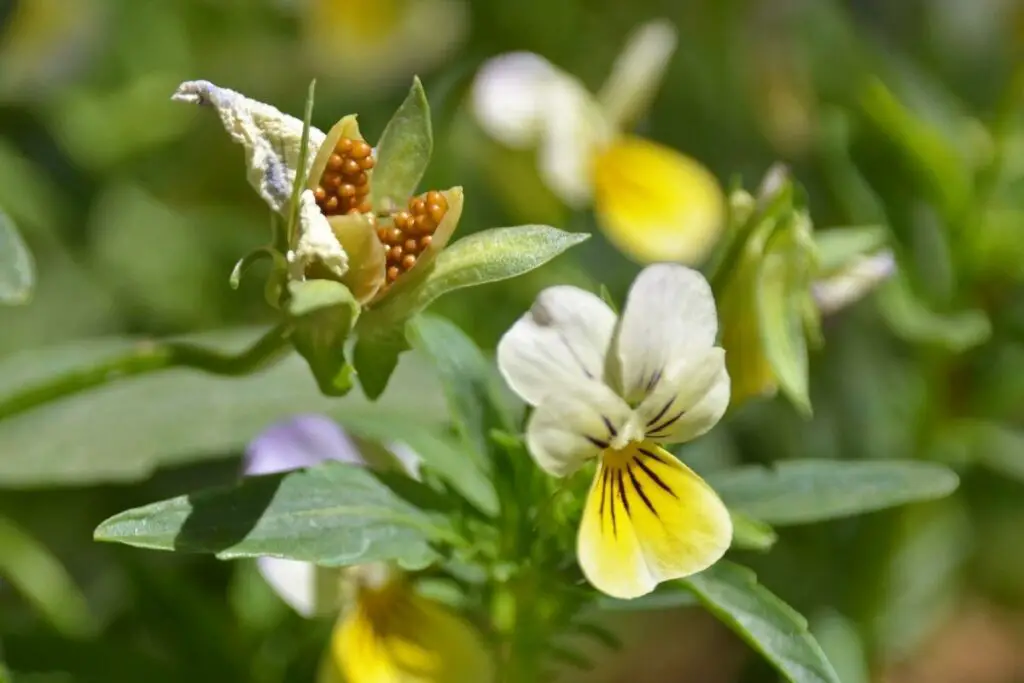Most of us grow pansies in our garden after buying the matured plants from the nurseries because it is easy. If you want something challenging, you can grow them by seed germination. But before you grow pansy seeds, you need to know whether your pansy seeds need any stratification or not.
Stratification is the process of mimicking the cold temperature of the winter season. And in this article, we shall learn do pansy seeds need stratification for germinating or not.
Pansy seeds need cold stratification as it helps to replicate the natural cold conditions, which helps them break their dormant stage. Place your pansy seeds in your refrigerator using a covered container for at least two weeks. Your seeds should germinate within a few days after taking them out.
Some of the pansy seeds have hard coats on them, and it becomes difficult for those seeds to break and sprout until they reach their dormancy stage. Stratification makes it easy.
It is necessary to mimic the exact weather conditions required by the pansy seeds to break their dormancy stage for the germination process.
Continue to read this article to gather more information about the stratification of the pansy seeds. We will also be covering other information related to the germination of pansy seeds as well.

Do pansy seeds need stratification?
Yes, pansy seeds need stratification.
Stratification or cold stratification is when you create a cold-weather condition for the pansy seeds. It would help if you created the exact cold weather with the help of which pansies can break their dormancy.
Sometimes the seed coats are difficult to break for sprouting. This happens because they have not yet reached their dormancy stage.
Once the seeds reach their dormancy stage and break the coats, the sprouting of the seeds through the germination process becomes a little easy and fast.
If those seeds fail to break and sprout out through the germination process, they will perish.
How to stratify the pansy seeds?
The ideal time for growing pansies is during the spring or fall months. If you want to grow pansies with seeds in such weather, your pansies might require cold stratification.
One way to stratify the seeds is by giving them the cold stratification after placing them into their soil medium in a tray or container.
While starting with pansy seeds, the best way is to start them indoors.
Later on, you can transplant them outdoors after they turn to seedlings or get matured. You can start the seeds 14 to 16 weeks before the last frost date.
Press the pansy seeds gently into the soil and cover them with a light layer of the soil. Cover the tray, where you have placed your seeds, with plastic.
For cold stratification, you can place the covered tray in your refrigerator for two weeks. Do not put them into the freezer, as that will result in icy and harsh conditions for the seeds to tolerate.
The seeds need a cold temperature for successful germination. Keeping them in the refrigerator for two weeks will help the seeds break their dormancy quickly, and the seeds will break out and sprout quickly.
After that, you can remove the pansy seeds from the refrigerator and place them outside in the garden bed, along with proper shade and protection.
Temperature is an essential factor while growing the seeds. The ideal temperature for germination is 65-75°F. So make sure that the outside temperature is suitable for the pansy seeds.
Remember to keep the soil bed moist during the germination period. Your pansy seeds will start germinating in one or two weeks after you have removed them from the refrigerator.
Looking for gardening supplies? We have tested 100's of products before recommending them to you guys. Check out our best pick below:
| Image | Gardening Supplies | Best Price? |
|---|---|---|
 Top
Top Top
Top | Raised Garden Bed Kit | Check On Amazon |
 | XLUX Soil Moisture Meter, Plant Water Monitor, Soil Hygrometer Sensor for Gardening, Farming, Indoor and Outdoor Plants, No Batteries Required | No Results |
 Top
Top Top
Top | 82 Pcs Garden Tools Set and Extra Succulent Tools Set | Check On Amazon |
 | Joeys Garden Expandable Garden Hose with 8 Function Hose Nozzle, Lightweight Anti-Kink Flexible Garden Hoses, Extra Strength Fabric with Double Latex Core, (50 FT, Black) | No Results |
 Top
Top Top
Top | Dual Chamber Compost Tumbler | Check On Amazon |
 Top
Top Top
Top | Sunnyglade Plant Stakes | Check On Amazon |
 Top
Top Top
Top | Organic Cold Pressed Neem Seed Oil | Check On Amazon |
 Top
Top Top
Top | Mighty Mint Gallon :-Insect and Pest Control Peppermint Oil | Check On Amazon |
 Top
Top Top
Top | Scotts DiseaseEx Lawn Fungicide | Check On Amazon |
 Top
Top Top
Top | Jacks Classic 20-20-20 All Purpose Fertilizer | Check On Amazon |
 Top
Top Top
Top | 30,000 Seeds Pollinator Attracting Wildflower Mixture | Check On Amazon |
 Top
Top Top
Top | Survival Vegetable Seeds Garden Kit-Over 16,000 Seeds | Check On Amazon |
Soaking pansy seeds before cold stratification
Another way to stratify the pansy seeds is before performing the germination process, soaking them into the water for some time.
As mentioned earlier, some of the pansies’ seed coats remain hard for which they take more time to break and sprout out. They do not break and come out until they reach their dormancy stage.
If your pansies are not in their dormancy stage, then planting the seeds in such a situation will damage them, leading to death.
However, you can break the dormancy of the seeds by cold stratification. Give your seeds at least two weeks for stratifying them.
- Soak the seeds in the water for twenty-four hours and then dispose of the seeds floating in the water because these seeds will not live long.
- After that, you will need to keep the remaining seeds in a labeled plastic bag (for example, you can go for sandwich bags) along with some equal amount of moist vermiculite.
- Keep this bag in the refrigerator and store it for two weeks. Make sure that the temperature inside the refrigerator is at about 40°F.
- Avoid keeping them in the freezer as that might create harsh conditions for those pansy seeds and even harm them.
- After two weeks, you can take out the seeds from the fridge and plant them in the garden bed. Do not forget to give proper shade and protection to the pansy bed to keep them from harsh weather conditions.
How do you germinate Pansy seeds?

For sowing the seeds to germinate:
- Select a good site for making a pansy bed.
- Fill the bed about one inch from the top with a seed-starting mix.
- Bring the seeds from the refrigerator and sprinkle them on the surface of the soil.
- Spread the seeds evenly and keep little space in between each space if you do not want to transplant them. This will help the root system to develop and spread freely without being suffocated.
After spreading the pansy seeds:
- Coat the seeds with a thin layer of soil, apparently with 1/8 inch layer of the soil mix.
- Gently press down the soil so that the seed gets covered and adjusted well into the soil.
- Gently apply water to the soil. Consider misting the soil with a spray bottle.
- Do not disturb the seeds in the soil.
Make some shade to protect the soil bed from harsh weather conditions, like excessive sun heat or the rains. This will prevent the seeds from getting disturbed by any outside reasons or movements.
Cover the soil bed with some plastic or newspaper. This will help the soil bed to retain the moisture for a long time for a better germination performance. Covering the bed will also give the seeds darkness which is an essential requirement for successful germination.
Germination requirements and care
Ensure that the temperature outside is about 65-75°F if you want to sow them in the garden bed directly. Pansies can grow best in such weather conditions. The seeds should germinate within 10 to 20 days.
To keep your seeds safe and active during the whole germination process, remove the cover once daily for some time to allow some oxygen flow and check whether the soil is moist.
If you find out that the soil is drying, mist the soil with water gently (make sure you don’t disturb the seed while watering) to keep the soil moist and then cover it again.
Once your seeds have started producing seedlings, you can remove the plastic or newspaper cover to let them have bright light and cool weather.
When your pansy seedlings start to produce leaves, remove the shade to let them get bright sunlight throughout the day.
Water them regularly to keep the soil bed evenly moist and keep the pansy plants cool and hydrated. Also, feed them with a balanced fertilizer for good metabolism.
When should you sow pansy seeds?

Mostly, the pansies are treated as either annuals or biennials. To determine when to sow the pansy seeds depends on when you want to see the flowers on the plants. Only then will you notice prolific flower growth in your plant.
If you want your pansy plants to produce blooms in the same year when they are sown, you can sow the seeds at the end of January or February.
If you think of sowing the pansy seeds in your garden bed in June, you will probably be collecting the pansy flowers during the early spring one year after sowing them.
If you sow the pansy seeds early, that is, in May, the shrubs will start to expand, and the flowers will start to fall off, due to which your pansies might face severe damage during the time of spring blooms.
Your pansies will act as an annual in the first year and biennial in the second year for such different cases.
Also read: When Should Pansy Seeds Be Planted? (+Tips To Plant)
After seeding care and pansy care tips
After stratification and germination, all your plants need is good care for healthy growth and to remain strong, alive, and green.
When you see that the seedlings have started growing leaves, start feeding them with fertilizers. You can use water-soluble fertilizer for easy absorption with the NPK ratio of 24-8-16. This will help the plant to increase metabolism.
Mix the fertilizer with water by making it at 1/4 strength. Apply the fertilizer once a week instead of regular water for better results. Later on, use a balanced (10-10-10) fertilizer for good results.
The seed packets will list the information about the spacing of the plants. Keep a space of about 6 to 12 inches for flexible growth of the plant and sound development of the root system.
- Make sure that the site of the soil bed is having a good amount of sunlight.
- Water them well. At least make sure that the plants are getting one inch of water every week.
- Keep the soil bed evenly moist.
- Make sure that the soil bed has a sound drainage system.
Final words
Pansies are not challenging to grow from seeds. You need to care well during the germination process. It is time-consuming but will give the same result as buying matured plants.
It is important to stratify the pansy seeds before germinating them. This helps them break the dormancy, which further helps the seeds break and sprout easily. If the seeds fail to do so, they will die during the germination process.
So, stratifying is a good choice. Remember, the pansies need cold stratification, not warm. Store them in good condition in the fridge, and then you are free to plant them in your garden bed.
Keep in mind the suitable temperatures for the stratification of the seeds. Along with that, also check the temperature while germinating the seeds. The temperature plays a vital role in the whole process. Or else, you will not find any good progress in the seeds.
Take good care of the pansies to keep them strong and alive.
Ref: The University of Arkansas, Britannica, Utah State University, Wikipedia, The University of Georgia, The Pennsylvania State University, The Royal Horticultural Society.
